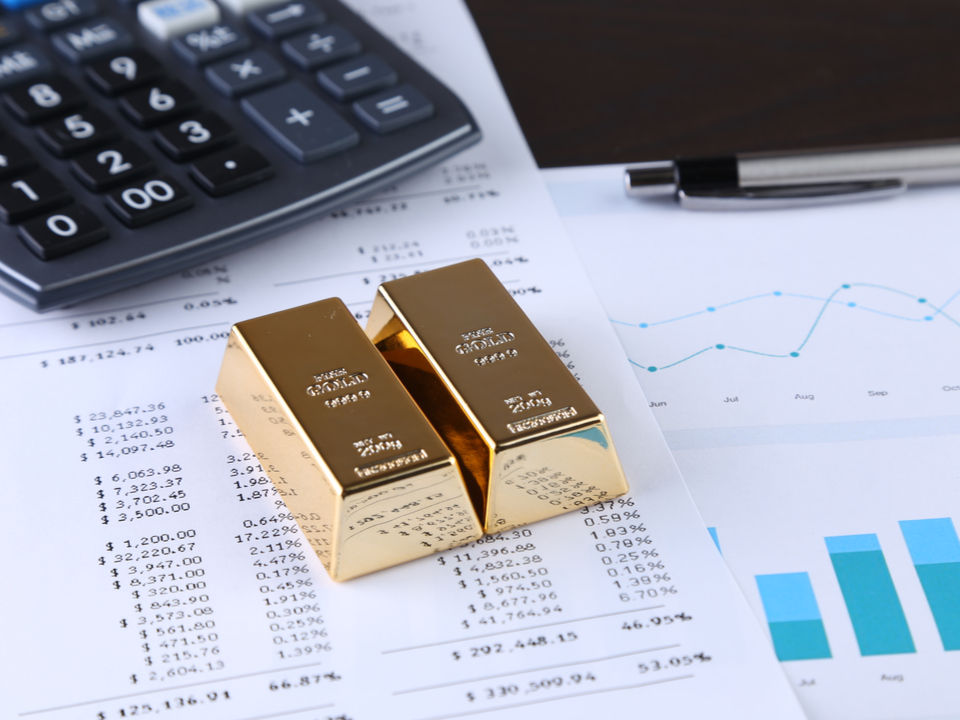It’s no secret that gold prices fluctuate from time to time. However, few people understand why the fluctuation occurs. Some people believe inflation skyrockets gold costs, while others think social issues influence prices.
While these factors often affect gold prices, they aren’t the primary reasons. So, why does the price of gold fluctuate? We’re here to explain why and how it impacts your investments.
Although there isn’t a sole cause for fluctuating gold prices, there are three primary culprits, including:
- Investor behavior
- Supply
- Demand
These factors often overlap with each other, causing a chain reaction — for example, the gold supply frequently affects investor behavior, raising the demand. Inversely, the investor’s behavior can also affect the supply. They all work together and play a part in fluctuating gold prices.
Investor Behavior
Gold is often viewed as a hedge against inflation, meaning the prices usually remain steady or increase over time. Since the price rarely decreases, many people invest in gold to protect their wealth during turbulent economic periods. When the U.S. dollar starts losing its value, investors flock to gold, resulting in increased prices.
It’s important to note that inflation itself doesn’t necessarily affect gold prices. It’s the investors buying all the stock at one time. The investor’s behavior dwindles the gold supply, increasing the cost.
Effects of Dollar Valuation
Between 1998 and 2008, the U.S. dollar’s value fell dramatically, causing many people to invest in gold as a means of security. As more people turned to gold investments, the price nearly tripled, reaching $1,000 an ounce. The gold investment boom continued through 2012 and resulted in another price increase.
By the end of 2012, gold prices had reached $2,000 an ounce. The influx of gold investors caused the prices to skyrocket, going from a few hundred dollars an ounce to $2,000 in less than 15 years.
The value of the U.S. dollar and the economy tend to correlate with investor behavior. If the dollar’s value remains strong and the economy is in good health, investors don’t usually buy gold. The lack of investors often decreases gold’s value.
However, if the dollar’s value decreases and the economy is in shambles, gold investments drastically increase and typically raise in value. Investor behavior has a serious impact on gold prices and is one of the key reasons why the price of gold fluctuates.
Supply
Believe it or not, nearly every piece of mined gold in history still exists today. Although mined gold is abundant in the modern world, it’s still exceedingly valuable and maintains its price. However, gold mining is becoming harder and more expensive with each passing year.
Miners must dig deeper, travel farther, and mine longer to find usable gold.
This is partially because most of the easily accessible gold is already in circulation. Despite this, the lack of unmined gold combined with the longer mining hours, tougher work conditions, and less usable gold mines made the industry much more expensive. The increased mining costs have a significant effect on gold prices.
Since gold production is more expensive than ever, people must sell gold at a higher price. Although there is plenty of mined gold already, a substantial amount is already owned by someone. Studies indicate that the amount of stockpiled gold in the world today is 60 times greater than the quantity of gold mined every year.
A decreased supply with a high demand results in increased prices.
Demand
Like most things, the demand for gold plays a key role in the precious metal’s price. The higher the demand, the higher the price.
The gold investment boom between 1998 and 2012 saw an incredible increase in demand. As more and more investors sank their money in gold IRAs and bullions, the price increased substantially. As stated before, one ounce of gold went from a few hundred dollars in 1998 to $2,000 in only 14 years.
If the demand didn’t increase, there is a good chance gold prices would still be below $500 an ounce.
What makes gold so interesting to investors is how it holds its value over time; although gold prices decrease from time to time, it’s exceedingly rare and doesn’t go down by much. Once the gold investment boom ended in 2012, the price of gold went down a bit, but only by a few hundred dollars. One ounce of gold still costs around $1,800 today — only a decrease of 200 dollars in nine years. Despite the decrease in demand, gold managed to maintain most of its value.
Central Banks and Their Effect on Gold Prices

Although investor behavior, supply, and demand are the biggest contributing factors to why the price of gold fluctuates, they aren’t the only things that affect the cost. The amount of gold in a central bank also contributes to fluctuating gold prices.
Central banks have a significant amount of gold tucked away in their reserves. When gold reserves thrive while the economy is doing well, central banks diminish their gold holdings. Gold becomes a dead asset to banks during economic high points.
During these times, gold has little to no return and takes up valuable space in the central banks’ reserves. If investors aren’t interested in investing in gold, central banks don’t have a reason to hold on to it, which reduces the price per ounce.
Banks attempt to maintain the amount of gold they put on the market to influence price fluctuations. The Washington Agreement on Gold limits banks from selling more than 400 metric tons a year to cap gold prices. The amount of gold a bank sells severely impacts gold costs.
The Effects of Monetary Policy on Gold Prices
Another essential factor in gold prices is monetary policy. The Federal Reserve controls monetary policy and influences the growth of the money supply while deciding the inflation rate. Since gold is often considered an inflation hedge, it usually becomes more expensive when inflation increases.
High inflation rates don’t always mean lower gold prices. When the U.S. dollar starts losing its value, many people panic and try to find ways to protect their wealth. Many people began investing in gold since it generally maintains its value despite high inflation rates.
As gold investing becomes more popular, the demand increases, raising the overall price. The price shoots up due to the influx of investors and high demand, not because of inflation.
Geopolitical Uncertainty: How World Tensions Influence Gold Prices
One of the biggest reasons people invest in gold is to protect their wealth during economic hardship. However, geopolitical uncertainty and world tensions also drive people to invest in gold as the precious metal has a reputation for being a crisis commodity. In fact, gold investments outperform most other investments during crises.
As tensions rise between two rival nations, many citizens become fearful of their economic future and turn to gold as a safeguard. Since gold maintains its value, there’s a good chance that investors will maintain their wealth if their country’s currency collapses. If citizens lose confidence in their government, gold prices tend to increase due to the rising demand.
Countries don’t have to be on the verge of war for people to lose hope in their government. Catastrophic events like terrorist attacks and nationwide epidemics also push people to invest in gold. Since the start of the COVID-19 outbreak, gold prices have risen 28%.
Although the United States isn’t on the brink of war, many people are unsure about their future. This uncertainty causes people to invest in gold to protect their fortune if tragedy strikes.
The price of gold also shot up during Brexit. Since many people weren’t sure of the U.K.’s future after withdrawing from the European Union, many citizens put their money into gold and other precious metals. Although there isn’t a way to know for certain, it’s likely Brexit played a pivotal role in the gold price spike.
How to Get the Most Out of Your Gold Investments
If you’re looking to jump into the exciting world of gold investing, it’s crucial to have an experienced team of investors by your side. The precious metal experts at Learn About Gold can equip you with the knowledge you need to take your gold investments to new heights. We will guide you through the investment process while providing expert advice that paves the way to financial success.
Our team has a wealth of experience with gold IRAs and other investment options, allowing you to grow your profits. Whether you’re a novice gold investor looking for a starting point or a seasoned veteran seeking a gold IRA, Learn About Gold can help you with all your precious metal investing needs.
Our investment strategies are second to none and can help you protect your wealth and increase your profits.
If you’re ready to take the first step in becoming a successful precious metal investor, contact Learn About Gold and see what our team of expert investors can do for you. We understand why the price of gold fluctuates and can help you get the most out of your investments.
Don’t wait until gold prices skyrocket. Call Learn About Gold and allow your gold investments to reach their full potential today.





